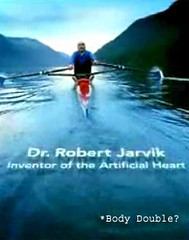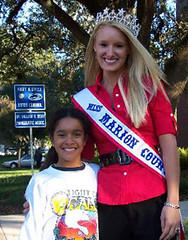A few weeks ago, I was asked to name names. And every time someone asks me to, the first thought that comes to mind is “never name names.” But hey, it’s Valentine’s Day. Maybe a little love can go a long way.
Specifically, I was asked who influences me. Ho hum.
First things first. I never much liked the term influence, especially when it’s applied to social media. I prefer to think about that differently: there are people who make me think and there are people who do not. Besides, influence is so very loaded with the notion of blanket agreement. I don’t know anyone like that.
Second, there are too many bloggers who make me think to list in a single post, so the only way to do it is to break them up into niches.
In honor of Valentine’s Day, here are ten folks connected to communication who make me think — five who make me think frequently and five who I expect will make me think. (In other words, add them to your watch lists if you haven’t already).
Five People Who Make Me Think
Geoff Livingston — The Buzz Bin
Whether you catch Geoff Livingston with his team on The Buzz Bin or on Now Is Gone, he always looking to stay ahead of the social media curve. While we might disagree on some communication strategy topics, any back and forth always leads to deepening the discussion to where it needs to be. Thought: If there is a social network or online tool worth a second look, he almost always knows what it is and how to make it work.
Valeria Maltoni — Conversation Agent
If anybody connects the dots between strategic communication and conversation or brick-and-mortar stores and online presence, it’s Valeria Maltoni and the Conversation Agent. I tend to agree with her more often than any other blogger out there.
Thought: If anyone can convince you that cross-blog conversations have more value than the average meme, she’s the one.
Michael Keleman — Recruiting Animal
The Recruiting Animal was one of the first people online to take me to task on my principle that “you can’t control what other people say about you; you can only control how you respond to them” when he introduced himself by calling me a sissy. We’ve been friends ever since. You can catch his hard question approach at Recruiting Animal. Thought: Real online friends don’t need pats on the back; they need authenticity.
Jason Davis — RecruitingBlogs
When I first met Jason Davis, he was heading up Recruiting.com. Now, he administers RecrutingBlogs.com, a niche social network on Ning that has become very popular in the recruiting industry. The reason, in part, is leadership. Davis has an approach that works well in social media, lightly guiding people without ever having to become a police state like some social networks do. Thought: He knows how to make a social networks thrive.
Scott Baradell — Media Orchard
Whether it’s a quip on SpinThicket or pop culture think piece, Scott Baradell delivers. He’s proven on more than one occasion that he knows his “stuff;” he just chooses not to share it all the time because sometimes the “stuff” just isn’t all that fun to write about. Thought: If you’re not having fun online, it’s not worth the effort.
Five More Thinkers In The Mix
Jason Falls at Social Media Explorer has something going on with a unique blend of social media banter and blog business. It’s bit a random at times (as if I’m not), but he’s doing what explorers do. Um, they explore.
Ike Piggot and his Occam’s Razor is a blog to behold. People say he’s someone to watch for all sorts of reasons. I like it because he keeps his blog personal, relevant, and well written. It makes me forgive the occasional self-loathing “nobody reads me” stuff from time to time.
Dane Morgan is a hardcore online marketing guy who understands the tech better than most. He likes to call a duck a duck and never needs to apologize for it. Blog promotion tends to be a favored topic on Dane Morgan Niche Blogger and he gets into the nuts and bolts of programs like Entrecard (more on that next week).
Sterling Hagar is off the social media crowd radar, but no less relevant. And while I don’t read Agency Next every day, I always know I’ll find something interesting there when I visit. He covers topics that others ought to follow and expand upon.
Bill Sledzik probably belongs in the first five, but then it wouldn’t be five. He’s the real deal and takes a no-nonsense public relations talk on ToughSledding, always in the mix for me. My bet is that he would already be an “A-list” blogger if it wasn’t for the lack of a daily post. No matter. There’s something to be said for not doing so.
Naturally, whether you read this blog regularly or from time to time, Happy Valentine’s Day to you too. Emails and comments make me think too, not just other bloggers. It helps keep things interesting.
Jason Davis suggested I consider making a meme out of this. I would, but I’m not very big on memes. So I’ll leave that up to everyone else. Besides, there are many, many more bloggers, social network connections, and people who make me think beyond communication.
For instance, my wife and partner makes me think. Every day, in fact. And today she has me thinking how much I love her, especially because I’ll be teaching public relations when I probably should be doing something with her.
It takes someone special to put personal perks on hold sometimes. Right on, next week it will be the same thing on her birthday. Happy Valentine’s Day, Kim.

Specifically, I was asked who influences me. Ho hum.
First things first. I never much liked the term influence, especially when it’s applied to social media. I prefer to think about that differently: there are people who make me think and there are people who do not. Besides, influence is so very loaded with the notion of blanket agreement. I don’t know anyone like that.
Second, there are too many bloggers who make me think to list in a single post, so the only way to do it is to break them up into niches.
In honor of Valentine’s Day, here are ten folks connected to communication who make me think — five who make me think frequently and five who I expect will make me think. (In other words, add them to your watch lists if you haven’t already).
Five People Who Make Me Think
Geoff Livingston — The Buzz Bin
Whether you catch Geoff Livingston with his team on The Buzz Bin or on Now Is Gone, he always looking to stay ahead of the social media curve. While we might disagree on some communication strategy topics, any back and forth always leads to deepening the discussion to where it needs to be. Thought: If there is a social network or online tool worth a second look, he almost always knows what it is and how to make it work.
Valeria Maltoni — Conversation Agent
If anybody connects the dots between strategic communication and conversation or brick-and-mortar stores and online presence, it’s Valeria Maltoni and the Conversation Agent. I tend to agree with her more often than any other blogger out there.
Thought: If anyone can convince you that cross-blog conversations have more value than the average meme, she’s the one.
Michael Keleman — Recruiting Animal
The Recruiting Animal was one of the first people online to take me to task on my principle that “you can’t control what other people say about you; you can only control how you respond to them” when he introduced himself by calling me a sissy. We’ve been friends ever since. You can catch his hard question approach at Recruiting Animal. Thought: Real online friends don’t need pats on the back; they need authenticity.
Jason Davis — RecruitingBlogs
When I first met Jason Davis, he was heading up Recruiting.com. Now, he administers RecrutingBlogs.com, a niche social network on Ning that has become very popular in the recruiting industry. The reason, in part, is leadership. Davis has an approach that works well in social media, lightly guiding people without ever having to become a police state like some social networks do. Thought: He knows how to make a social networks thrive.
Scott Baradell — Media Orchard
Whether it’s a quip on SpinThicket or pop culture think piece, Scott Baradell delivers. He’s proven on more than one occasion that he knows his “stuff;” he just chooses not to share it all the time because sometimes the “stuff” just isn’t all that fun to write about. Thought: If you’re not having fun online, it’s not worth the effort.
Five More Thinkers In The Mix
Jason Falls at Social Media Explorer has something going on with a unique blend of social media banter and blog business. It’s bit a random at times (as if I’m not), but he’s doing what explorers do. Um, they explore.
Ike Piggot and his Occam’s Razor is a blog to behold. People say he’s someone to watch for all sorts of reasons. I like it because he keeps his blog personal, relevant, and well written. It makes me forgive the occasional self-loathing “nobody reads me” stuff from time to time.
Dane Morgan is a hardcore online marketing guy who understands the tech better than most. He likes to call a duck a duck and never needs to apologize for it. Blog promotion tends to be a favored topic on Dane Morgan Niche Blogger and he gets into the nuts and bolts of programs like Entrecard (more on that next week).
Sterling Hagar is off the social media crowd radar, but no less relevant. And while I don’t read Agency Next every day, I always know I’ll find something interesting there when I visit. He covers topics that others ought to follow and expand upon.
Bill Sledzik probably belongs in the first five, but then it wouldn’t be five. He’s the real deal and takes a no-nonsense public relations talk on ToughSledding, always in the mix for me. My bet is that he would already be an “A-list” blogger if it wasn’t for the lack of a daily post. No matter. There’s something to be said for not doing so.
Naturally, whether you read this blog regularly or from time to time, Happy Valentine’s Day to you too. Emails and comments make me think too, not just other bloggers. It helps keep things interesting.
Jason Davis suggested I consider making a meme out of this. I would, but I’m not very big on memes. So I’ll leave that up to everyone else. Besides, there are many, many more bloggers, social network connections, and people who make me think beyond communication.
For instance, my wife and partner makes me think. Every day, in fact. And today she has me thinking how much I love her, especially because I’ll be teaching public relations when I probably should be doing something with her.
It takes someone special to put personal perks on hold sometimes. Right on, next week it will be the same thing on her birthday. Happy Valentine’s Day, Kim.






















